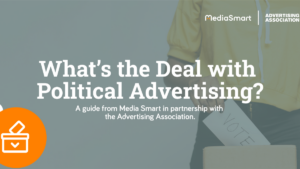by John Tigg, GM, International, Yieldmo
You’re running late for work, glance up at the sky and notice the gathering clouds. “Is it worth grabbing a coat?” you think, pulling your phone out and checking a weather app. An ad appears, but before you’ve even noticed it, your phone is back in your pocket. The goal of marketing is to serve ads to potential consumers in the places they’re most likely to see them. But in our fast-paced, endlessly distracting world, marketers need to ask: is anyone paying attention?
The advertising industry has long assumed that what’s good for ROI is what consumers want. With the average person’s concentration lasting only 8 seconds, marketers need to re-examine how they grab the attention of audiences and what true engagement really looks like.
Seeing is believing
An attention revolution is happening in advertising. For many years, marketers have been relying on antiquated signals to measure campaign success. Though many are staking their reliance on clicks as a leading metric, a good portion of marketers still link its outcomes directly to sales. However, with measures such as Click-Through-Rate (CTR) not taking bots or accidental clicks into account, can these really be trusted?
Viewability is another metric that marketers aim to tie directly to buying intent. But what use is a highly viewable ad if the creative doesn’t engage a user? Or worse, what if a highly viewable ad actually deters a potential consumer due to its invasiveness?
It is here that attention metrics can help marketers gain a true insight into the intention of consumers. Though the idea of measuring attention may sound prying, these signals are actually very simple and privacy safe. For example, they track if a user is leaning forward, their scroll speed, and the angle they are viewing their device. The stats can help us understand consumer behaviour, buying intent, and most importantly whether they are paying attention.
Eyes on the prize
Attention can be calculated by looking at a few factors. The first is the commonly available, baseline information about the impression – such as creative, content, consumer, and viewability. The second is the micro gestures that indicate user interaction with an ad. These can be as simple as hovering a mouse over an ad, or more complex, such as sharp changes in the scrolling direction. Turning these inputs into actionable insight means utilising machine learning to look for predictive patterns and combinations of signals and attributes that signal future intent. Marketers can then use this data as a way of judging whether or not a consumer has shown interest in an ad on a more precise level.
It is vital, though that these signals can be processed in real-time, with marketers able to gather insights that are truly actionable. Once brands can see how users are interacting with an ad, they can rapidly optimise their spending. Not only can ads be placed in more appropriate environments, but they can be placed at more relevant times. Attention and timing are closely linked, and a user is more likely to pay attention to an ad if the timing is right for them.
While the lack of standard attention metrics across the industry may cause some brands to pause before diving into attention metrics, those brands that have the drive to discover deeper insights into their customers have already begun to harness the power of attention.
Unleash creativity
A more traditional outlook on capturing attention might be that it doesn’t matter where or how an ad is presented to a consumer, if that ad is creative and unique enough, consumers will take notice. While to a certain extent this is true, media often has hidden red tape that can stifle even the best creative. This is where attention metrics can truly maximise the potential of eye-catching campaigns.
Attention metrics can validate the impact of creative quickly and definitively – no longer will brands have to rely on focus groups or gut feelings. If it is not having quite the impact expected, the design can be tweaked or tested against other alternatives. Ultimately attention metrics can reveal what is truly effective.
As rising inflation starts to hit media budgets and the loss of third-party cookies approaches, marketers are going to have to try new methods to make their campaigns as impactful as possible. Harnessing the power of attention metrics is a way to tackle both of these challenges successfully.
While traditional metrics can help to optimise for positive outcomes, they won’t matter if an ad is not garnering any attention from consumers. Attention metrics can help marketers to understand how to create the best creative and run the most effective campaigns, grabbing the eyes of users and making them take note.








